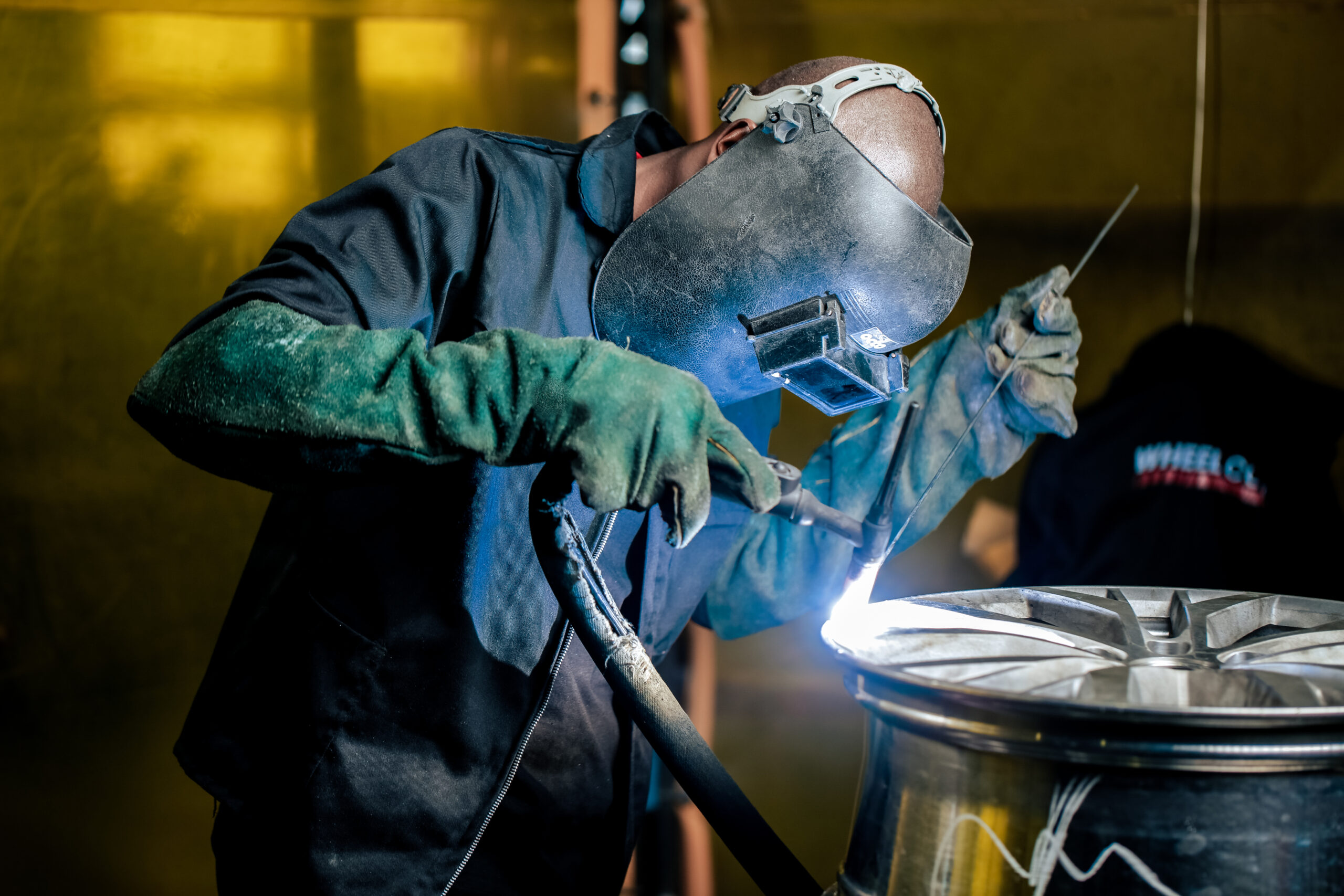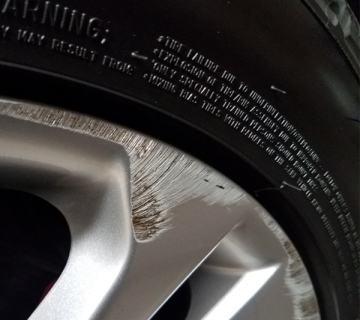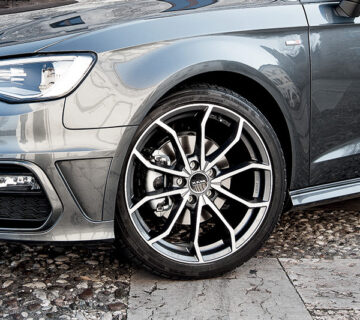With each of the alloy wheels we work on, we put them through a highly defined, customised wheel repair process that includes x-ray technology and patented wheel straightening machinery. Each wheel is assessed, stripped, x-rayed, repaired, x-rayed again, powder coated and painted. In the case of diamond cut wheels however, it has the added step of being put through the CNC machine before being lacquered. Over and above our alloy wheel repair process, we conduct a quality check at each station as well as a final overall check before delivering the final product back to the customer. This is all to ensure that each wheel leaves our centres with 100% wheel integrity. Wheels can be dropped off by customers at any of our stores, including our full refurbishment centres or at any of our Xpress Repair Centres, where we can also collect them by arrangement.

Step 1 – Assessment
Once your wheels have been removed from your car, we assess the complete damage to them. The valves or weights that assist in keeping the wheel balanced are also removed and will be replaced later. Identifying marks are applied, and your tyres are then safely stored. We also check your wheels for stress fractures, buckles or cracks, and advise a customer on whether they are beyond repair or not safe to drive on. If the wheel repair can continue, we will advise whether any work besides what the customer has requested will need to be carried out.
Step 2 – Stripping
After our examination has been completed, your wheels are then placed in a chemical stripping tank to remove all the old layers of primer, paint, lacquer and brake dust. With this, we do not use acid to avoid further damage. They are then placed into a machine that removes any traces of paint and chemicals that may be left from the stripping process, leaving a clean and contaminant-free wheel ready for prepping. Once we have dried the wheels, the surface is then keyed to accept the powder. The wheels are placed in our industrial oven and heated to 180o – 200o to remove any trapped air, which is a process also known as degassing. With that completed, we then x-ray to check for any damage that may have been seen before and apply a base coat primer, followed by a trip to the oven for the wheel to.
Step 3 – Welding
If required, the wheel will be welded with a method that inserts ‘metal’ back into the areas where it is missing. We do not use fillers in any part of the alloy wheel repair process and we only use TIG welding as a method for repairing any damage to an alloy wheel’s surface. As with all our wheel repair services, we will only weld a wheel where we are confident that the integrity and safety is not compromised. The wheel will then be passed to a lathe operative so that the welded area can be machined back to create a seamless finish. If necessary, the welded areas will 11be sanded and smoothed off by hand to complete the job. Afterwards, the wheel is x-rayed at different angles to ensure that there are no cracks or structural issues with the wheel that would compromise its integrity.
Step 4 – Cosmetic Repairs
Once the wheel integrity is checked, the wheels are then placed in an oven and heated for 30 minutes. This ensures a quality finish by removing any air trapped in the microscopic pores, so that no air escapes as the paint is being applied. A powder primer is then applied to every side of each wheel section and the wheels are reheated to make sure that the powder primer is cured, to produce a high strength, hard wearing coating. At the next stage, our technicians colour match and create the requested colour finish to apply to your alloys. The final coat of high-quality lacquer is then applied to the alloys before they are baked. This helps to make the wheels extremely durable and able to cope with the elements. After being baked, the alloys are hung up to cool and dry and depending on the type of finish requested, this step will finalise the full refurbishment of your wheel. Visit our Wheel Colour Change page to discover more about the different types of finishes we can do.
Step 5 – Final Inspection
Once the cosmetic repairs have been completed, the wheels go through the final quality check. The wheel will also go into our x-ray machinery, having 30 – 40 x-rays taken at different angles, to double check that there are no issues with the wheel that may have been missed during the previous quality checks. If no issues are noted, the wheel is then fitted back onto your vehicle or alternatively, it is returned to or collected by the customer. If you would like to make use of our Wheel Refurbishment service, feel free to contact us.


